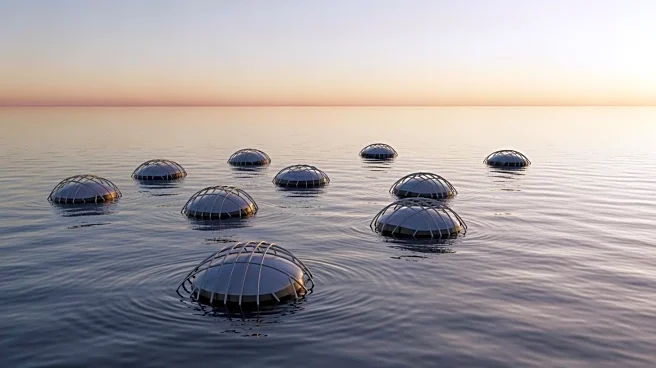What's Happening?
OCI Tokuyama Semiconductor Materials Sdn. Bhd. (OTSM) has successfully synthesized titanium nitride (TiN) films using a hydrothermal-galvanic couple method with reductive annealing. This process has led
to a significant improvement in photocurrent density, particularly when the films are annealed at 900°C in a nitrogen/hydrogen atmosphere. The study involved various samples, including SrTiO3/TiN films, which showed enhanced crystallinity and photoelectrochemical performance. The annealing process in N2/H2 resulted in a SrTiO3/TiO2/TiN structure, contributing to high photoelectrochemical performance. The research highlights the importance of controlled annealing conditions to optimize the formation of heterostructures that enhance photocurrent density.
Why It's Important?
The development of TiN films with improved photocurrent density is significant for the semiconductor industry, particularly in enhancing the efficiency of photoelectrochemical systems. This advancement could lead to more efficient solar energy conversion technologies, impacting renewable energy sectors. The ability to control the formation of heterostructures through specific annealing conditions offers potential for optimizing material properties in various applications, including electronics and energy storage. Companies involved in semiconductor materials stand to benefit from these innovations, potentially leading to new product developments and increased competitiveness in the market.
What's Next?
Future research may focus on further optimizing the annealing conditions to enhance the stability and performance of the TiN films. There is potential for exploring neutral electrolytes to improve long-term stability and reduce corrosion in photoelectrochemical systems. Additionally, the findings could lead to collaborations with other semiconductor companies to integrate these materials into commercial applications. The ongoing development in this area may also prompt regulatory discussions regarding the environmental impact and sustainability of new semiconductor technologies.
Beyond the Headlines
The synthesis of TiN films with enhanced photocurrent density raises ethical considerations regarding the environmental impact of semiconductor manufacturing processes. The use of high-temperature annealing and specific atmospheric conditions may require careful management to minimize emissions and energy consumption. Furthermore, the advancement in semiconductor materials could lead to shifts in industry standards, influencing global supply chains and potentially affecting labor markets in regions dependent on semiconductor manufacturing.











